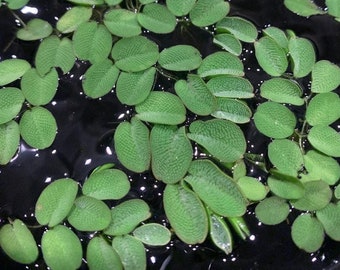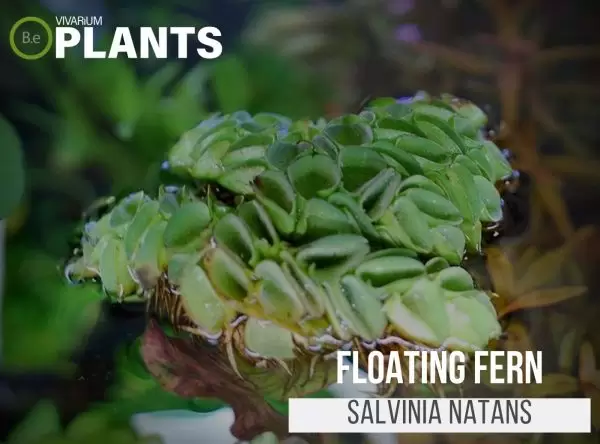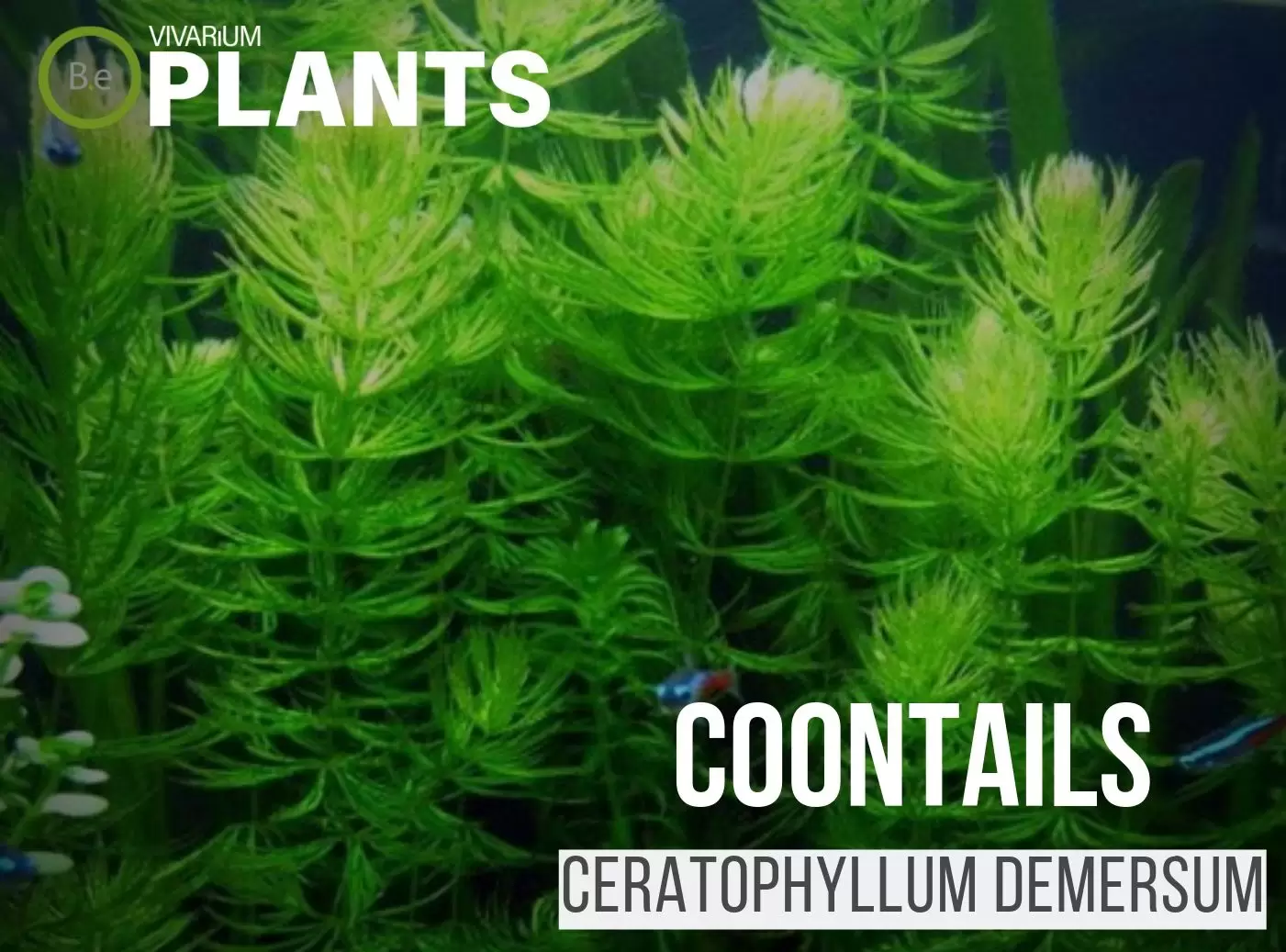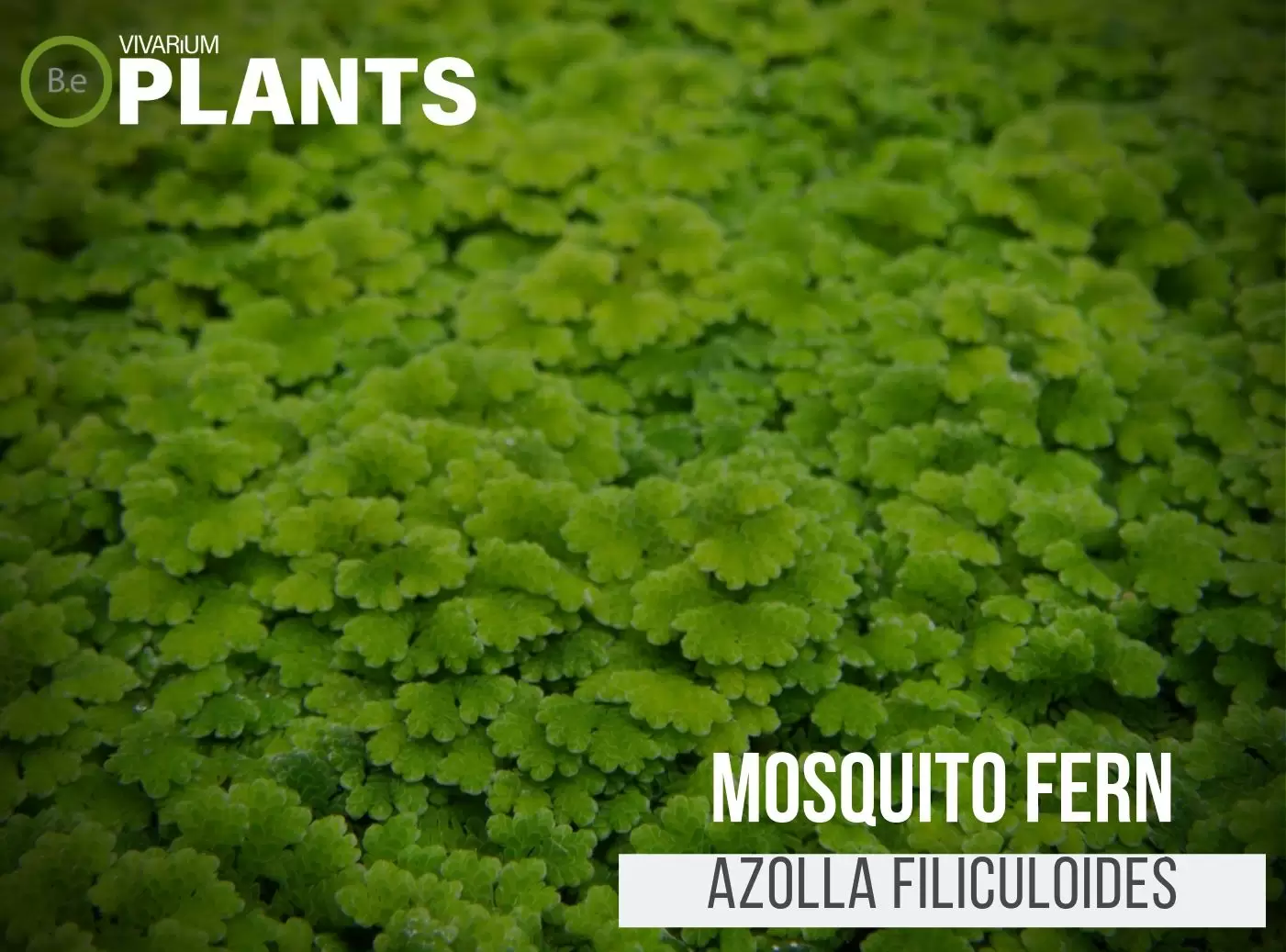The floating Fern (Salvinia natans) is an ideal aquarium fern for a thriving enclosure. There are a number of benefits this fern is great for when it comes to planted tanks.
If you are looking for an easy-to-care-for fern that is fully aquatic, Salvinia is a really affordable option to consider. This article will provide an in-depth guide to understanding floating ferns as well as some tips to help care for them.
| Quick Stats: | |
|---|---|
| Scientific Name | Salvinia natans |
| Common Name | Floating Fern, Water Butterfly Wing, Floating Watermoss |
| Family Name | Salviniaceae |
| Habitat | Freshwater |
| Temperature | 60°F to 70°F |
| Height | 2 to 3 inches |
| pH | 6.5 to 7.5 |
| Lighting | Bright |
Table Of Contents:
ToggleWhat Is Floating Fern?
Salvinia natans is a species of fern in the Salviniaceae family. Commonly referred to as floating fern, this plant is one of the few fully aquatic ferns sold in the aquarium market. The unusual aspect of this flora is its uncanny ability to float.
Furthermore, this fern doesn’t grow long roots like most other floating plants… Something to keep in mind when scaping a vivarium that might have limited space within the aquatic portion of the enclosure.


Floating Fern Facts
Besides Floating Fern, Salvinia natans are also referred to as Floating Watermoss and Water Butterfly Wings. These types of ferns are excellent for supplying shade over large areas of water. Providing both a refuge for small fish to take shelter and a natural filter from sunlight reducing the spread of algae.
Floating ferns are very often confused with other common floating mosses. Though similar in appearance, the floating fern is a very different plant and has a few recognizable qualities that can help correctly identify the fern. Separating it from other floating plants.
Description
Salvinia natans have a very recognizable appearance when it comes to identifying plants. Much like a typical fern, Salvinia has pinnate leaves that spread horizontally. The leaves will reach about half an inch in length.
At the base of the plant are two larger leaves spread out over the top of the water to keep the fern afloat. These leaves grow as big as an inch in diameter. The fronds of floating ferns are typically light green in color and have a protective layer covering the leaves called cuticular papillae.
Cuticular papillae are a unique layer of skin with hair follicles that keep this plant from rotting due to overexposure to water. This allows the fern to continue photosynthesis while wet as well as makes it suitable for stronger sources of light.
Being able to tolerate direct sunlight is a rare feature found in a fern. This makes floating ferns a popular choice in outdoor ponds. Another distinctive aspect of Salvinia is its root structure. Instead of long growing roots like most floating plants, this plant produces a single leaf that points down into the water.
Though it is common to see some root-like strings of green hanging down alongside the leaves, not only is this an excellent way to recognize Salvinia Natan, but it also makes it ideal for enclosures that have narrow depths of water.
Habitat
Floating fern is commonly found in parts of Central Europe. The habitat of this plant is typically areas of standing freshwaters like ponds or water gardens. Being a generally free-floating plant, Salvinia natans would not do well completely submerged in water.
The ideal environment this type of fern thrives in is humid, well-lit, warm locations. Water temperatures in these places are usually between 60 and 70 degrees Fahrenheit.
pH Preference
The pH preference is another defining difference between floating ferns and most other ferns we typically suggest as vivarium plants. Where most ferns like more acidic surroundings, Salvinia is more suitable for neutral environments. The best-case scenario as far as water parameters will be between 6.5 and 7.5 pH.
Vivarium Type
This type of fern will do great in a variety of vivarium types. When deciding whether to use floating fern in a particular type of enclosure, Be sure to go with setups that have some water feature. Here are recommended vivariums Salvinia natans will do well in:
- Paludariums – Half aquatic/ half terrain-based enclosure.
- Ripariums – Mostly aquatic-based enclosures with some terrain features present.
- Aquarium – Fully aquatic-based enclosure with little to no dry terrain.
Vivarium Placement
A floating fern is a fully aquatic plant. Avoid placing this fern above ground where it can’t reach a lucrative water source. Furthermore, avoid any attempts to sink this beneath the water as well. Salvinia natans is a surface water fern and needs to have its roots fully submerged and its leaves in the open air.
Substrate
A floating fern is generally a substrate-less plant. There will not be a need to provide a substrate of any type for this fern. This is an excellent fern for a hobbyist to add as a final touch or accent to the existing vivarium. If water parameters are set correctly and lighting is sufficient, this plant will thrive and grow fast!
Lighting
The outdoor environment Salvinia natans is naturally used to being in is a bright sunlight-saturated scene. At times this plant can be found in areas where shade is inevitable. But for the most part, floating ferns like to be in the direct sun.
When attempting to mimic the habitat from within a vivarium, providing aquarium lighting that is close to sunlight will be the best-case scenario. One idea will be to place the enclosure close to a window.
Furthermore, having strong LEDs close to the water surface will be ideal. Full-spectrum or UV lighting would also be a suggestion.
Buy Floating Fern
When finding floating fern for sale, expect a few key indicators you are buying the best quality plant. The fern should be snail free along with any other type of pest. The source of floating fern will usually be sold in small clumps, ready for you to propagate. The batch should arrive fairly moist and in fairly good shape.
Click the image below to find out more about the current price and other relative info:


Floating Fern Care and Propagation
Salvinia natans, in general, are pleurocarpous plants, meaning it grows outward. When propagated correctly, it will sprout small shoots with spores on the tips that help the fern grow into a dense mat.
With the proper care, this plant will grow extremely fast and completely cover the surface of the water. Pruning will be an absolute must in order to keep the invasive fern from getting out of hand.
How to grow
A floating fern is one of the easiest plants to grow. The best way to propagate it will be by dividing an existing mass into individual clumps. Spread out smaller pieces of fern to allow reformation to colonize.
This fern barely needs time to establish itself as it spreads so rapidly. Keep it in standing or slow-moving water and bright lighting to encourage growth. Once acclimated, trim down and remove extra pieces.
Watering
Just to reinforce the importance of these plants watering needs, keep them in the water at all times. This free-floating flora does best in standing water or extremely slow-moving water at the very least. Humidity levels should reflect that of a rainforest.
This plant will dry out quickly if the air moisture is too low, but an adequate amount of aquatic source should be enough to provide a good amount of moisture.
Plants Similar To Floating Fern
Adding diversity to an enclosure is key to an aesthetically pleasing enclosure. Try mixing up the look of your vivarium with different flora that can easily co-exist in the same types of environment. Furthermore, if for some reason you find this fern hard to acquire or would like to consider something similar to this plant…
Here are some other plants you might find may do well with or in place of Salvinia natans:
Conclusion
The Floating fern is a pretty unusual fern to see in general. That alone makes it an interesting choice of foliage to use in a tank. If all criteria are matched when it comes to water conditions and lighting, this fern will grow faster than you might hope for.
I would recommend this fern for tanks that need a solution for algae growth or shade-dependent aquatic plants. Now that this guide has gone into depth about the many characteristics of such a distinctive floater… What are your thoughts about its use as an aquarium plant?
Frequently Asked Questions
Yes, Salvinia make great plants for fish tanks, as they supply much–needed oxygen and shade. These ferns are also very easy to care for; they don‘t require much light or nutrient–rich soil, and they grow quickly, providing good shade and plenty of oxygen for fish to thrive.
Floating Fern is an easy–to–care–for plant that requires minimal maintenance. To ensure a healthy, vibrant plant, make sure to keep water clean and replace the water when necessary. Provide indirect, bright light and trim the fern if it starts to get too large. For an added boost, fertilize the water every two weeks with half–strength liquid fish emulsion.
Floating Fern is an aquatic plant commonly used in ponds to provide shade and keep the water cool. It also helps to create an environment suitable for other aquatic life and prevent algae growth.
Much like a typical fern, Salvinia has pinnate leaves that spread horizontally. The leaves will reach about half an inch in length. At the base of the plant are two larger leaves spread out over the top of the water to keep the fern afloat. These leaves grow as big as an inch in diameter.
Yes, Salvinia natans is a good addition to aquariums. It is a decorative floating plant that has a pleasant, bright green color and helps to maintain water clarity. Salvinia natans also provides a protective environment for fry and detritus–feeding fish. Additionally, its root system feeds beneficial bacteria, which helps to maintain healthy water conditions.



